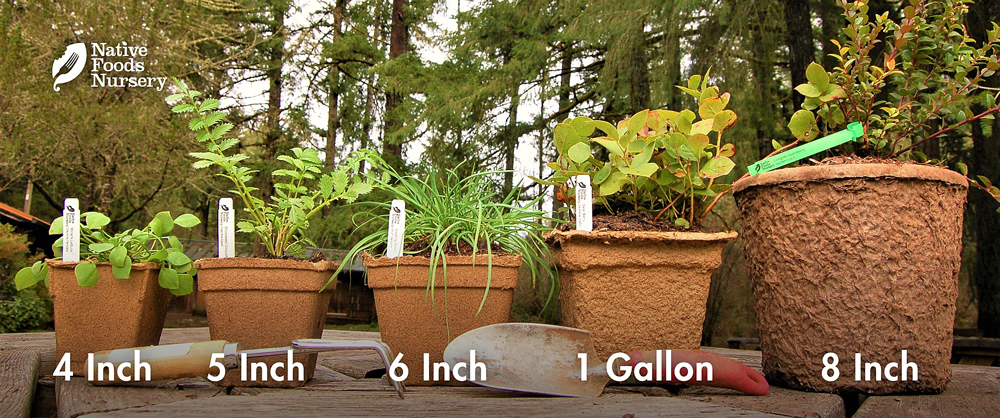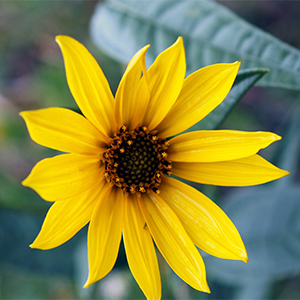Maximillian Sunflower


- Current Stock:
- 0
- Other Names:
- Maximillian Daisy
- Latin Name:
- Helianthus maximiliani
Maximilian Sunflower is a showy perennial herb with edible seeds and tubers.
Edible Uses
Maximilian sunflower is a native food similar to the popular Jerusalem Artichoke. Tubers and rhizomes can be shredded raw onto salads or roasted with other root vegetables. They can also be baked, sautéed, or pureed in soups. They are a good source of iron, potassium and thiamin. They are low in calories and high in fiber.
The seeds are also edible, and can be used for making oil or eating raw as a snack, sprinkled onto soups, salads, etc.
*NOTE: The tubers are high in inulin, which can disturb some people’s digestive process by causing excess gas. It is recommended to eat a small amount initially and let your stomach adjust to eating the tubers.
Ornamental Qualities
Maximilian Sunflower is as popular with the ornamental gardener as it is with the chef. The abundant flowers provide a late flush of golden color to the garden when most plants are winding down for the season. Each stalk has multiple sunflowers that bloom in succession.
Environment and Culture
Maximilian Sunflower is home to the prairies and grassland ecologies of the Midwest. It makes a great habitat plant: the flowers and seeds are loved by wildlife and livestock alike. Butterflies, beetles, and bees consume the nectar or pollen. Butterfly caterpillars feed on the foliage while moth caterpillars bore through the stems. Upland game birds, small non-game birds, and some waterfowl consume its seeds. Rabbits and groundhogs feed on young plants while elk, mule deer, white-tailed deer, and pronghorn antelope browse and graze older plants.
The plants are not fussy and will grow in a variety of soil and light conditions, but prefer full sun and well drained soils. Once established they do not need to be watered, and can spread. As a backyard gardener, consider growing Maximillian Sunflower with Western Snowberry, California Compassplant, Wild Blue Flax, Oregon White Oak, California Black Oak, Indian Ricegrass
This plant has rich cultural history and Northwest Native American tribes today still value this special plant as food, medicine, and family. Despite great cultural losses, they continue to work towards stewarding and restoring wild populations, both strengthening the integrity of the ecology and sustaining their cultural heritage and wisdom. These strong and recovering peoples and plants deserve our respect, gratitude, and reparations. (Learn more & how to help on our Charitable Giving page.)
**NOTE: Maximilian sunflower plants are allelopathic. They produce chemicals that hinder the growth of neighboring plants. These chemicals are not harmful to livestock and wildlife.
Harvest, Care, and Preparation
Allow plants to establish and spread before harvest. Harvest from the outer edges of the patch for the freshest tubers and rhizomes, as well as to keep the patch contained to the area you want it. The rhizomes and tubers are best harvested in winter or early spring so as to minimize disturbance to patch. Begin digging at a distance from the stalk to prevent accidentally damaging tubers. Once harvested, clean well and cook like a Jerusalem Artichoke. We recommend slicing and baking or sauteeing with coconut oil and salt until golde crispy brown.
Seeds mature head by head beginning several weeks after flowering. Harvest when they are hard, dry, and brown. Shake the seed heads out in an empty bucket or bowl and sift or blow off the chaff. Lightly toast the seeds until their oils and nutty aroma begin to emerge. Oil and salt can be added to taste. Use as a seasoning for other foods, or as a crunchy snack. Try making a native food "gomasio" by blending the seeds with salt.
Native Range: Midwest Prairie
USDA zones: 3-9
Ease of Care: Easy
Deer Resistance: Moderate
Light Requirements: Full Sun
Soil Type: Clay
Water Requirements: Low
Pollination: Self-fertile
Bearing Age: 1-2 years
Size at Maturity: 3-10 ft
Plant Spacing: 24-48 inches
Bloom Time: August-November
Harvest Time: October-November
Pot Sizing Guide

Our policy lasts 30 days. If 30 days have gone by since your purchase, unfortunately we can’t offer you a refund or exchange. To be eligible for a return, your item must be unused and in the same condition that you received it. It must also be in the original packaging. Gift cards are non-refundable. Once your return is received and inspected, we will send you an email to notify you that we have received your returned item. We will also notify you of the approval or rejection of your refund. If you are approved, then your refund will be processed, and a credit will automatically be applied to your credit card or original method of payment, within a certain amount of days.










